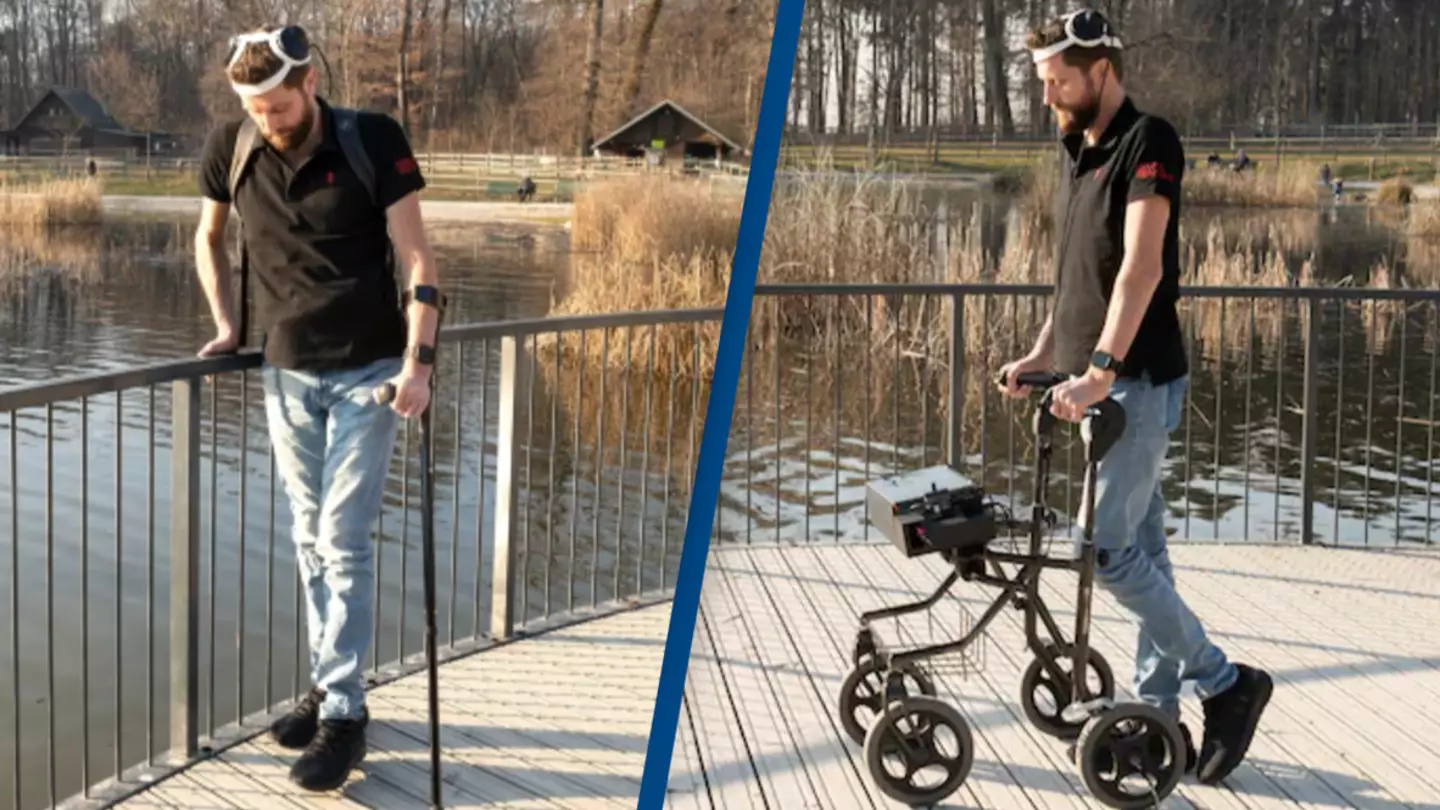
Over the last few years, advancements in technology and progress in science has meant a lot of things that were not remotely possible are now within the realms of possibility.
The likes of AI - otherwise known as artificial intelligence - has grown massively, to the point where some are even worried about them taking over the world.
Space technology has also made huge strides in recent years, but perhaps this particular science gain is the most satisfying one, and certainly the most human-connected story.
Advert
Thanks to science, a man has been able to walk again after communication was re-established between his brain and his spiral cord.
Gert-Jan Oskam, 40, was told he would never be able to walk again after breaking his neck in a traffic accident while on-board a bike in China back in 2011.
But since then, he has managed to climb the stairs and even managed to walk more than 100 metres at a time for the first time since his life-changing operation.
Advert
Thanks to a wireless 'digital bridge', Oskam noticed a massive difference in his mobility in just a matter of days.
But how exactly does it work?

Well, the piece of technology is known as a brain-computer interface, which is made up of two electronic implants - one in the brain and the other in the spinal cord.
Advert
The first implant is placed above the region of the brain responsible for controlling leg movements, which can decide the electrical signals generated when we think about walking.
The other implant is placed over the part of the spinal cord that controls the legs.
This has proved life-changing for Oksam, who never thought he would be able to walk again after his accident 12 years ago.
"A few months ago, I was able, for the first time after 10 years, to stand up and have a beer with my friends," the man from the Netherlands said.
Advert
"That was pretty cool. I want to use it in my daily life."

Meanwhile, Prof Jocelyne Bloch, a neurosurgeon at Lausanne University Hospital and one of those leading the project said: "What we’ve been able to do is re-establish communication between the brain and the region of the spinal cord that controls leg movement with a digital bridge"
The professor added that the system could 'capture the thoughts of Gert-Jan and translate those thoughts into stimulation of the spinal cord to re-establish voluntary leg movements.'
Advert
While Oksam is the only one so far to use the digital bridge, it is hoped the technology could be used to restore arm and hand functions in future, too.
Topics: Technology, News, Science
